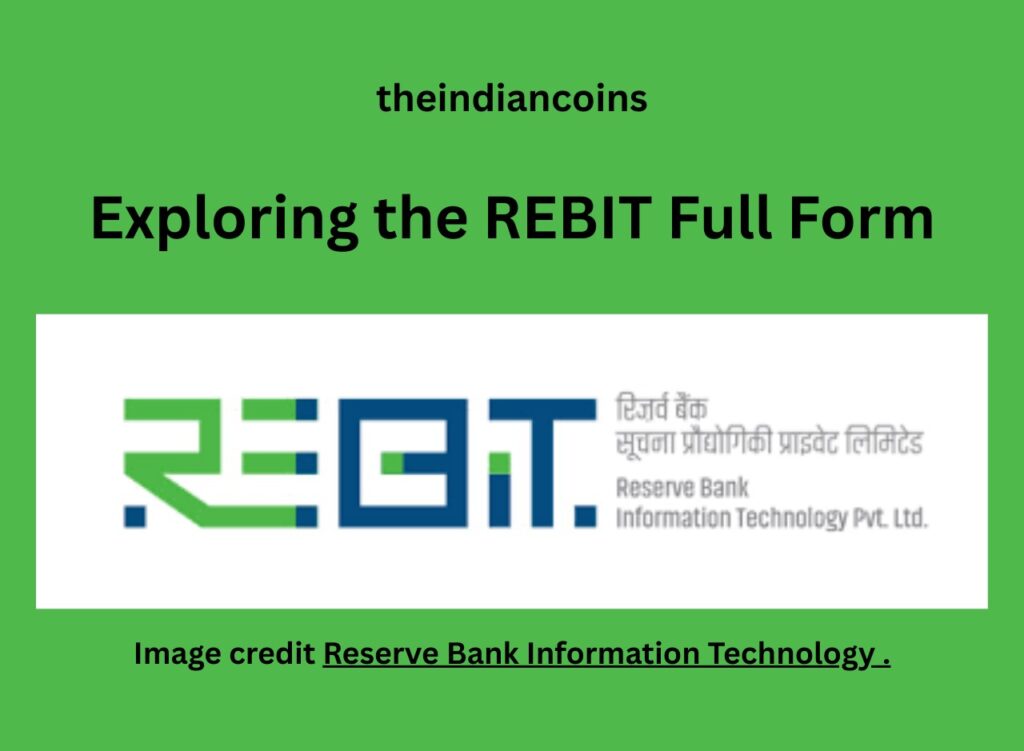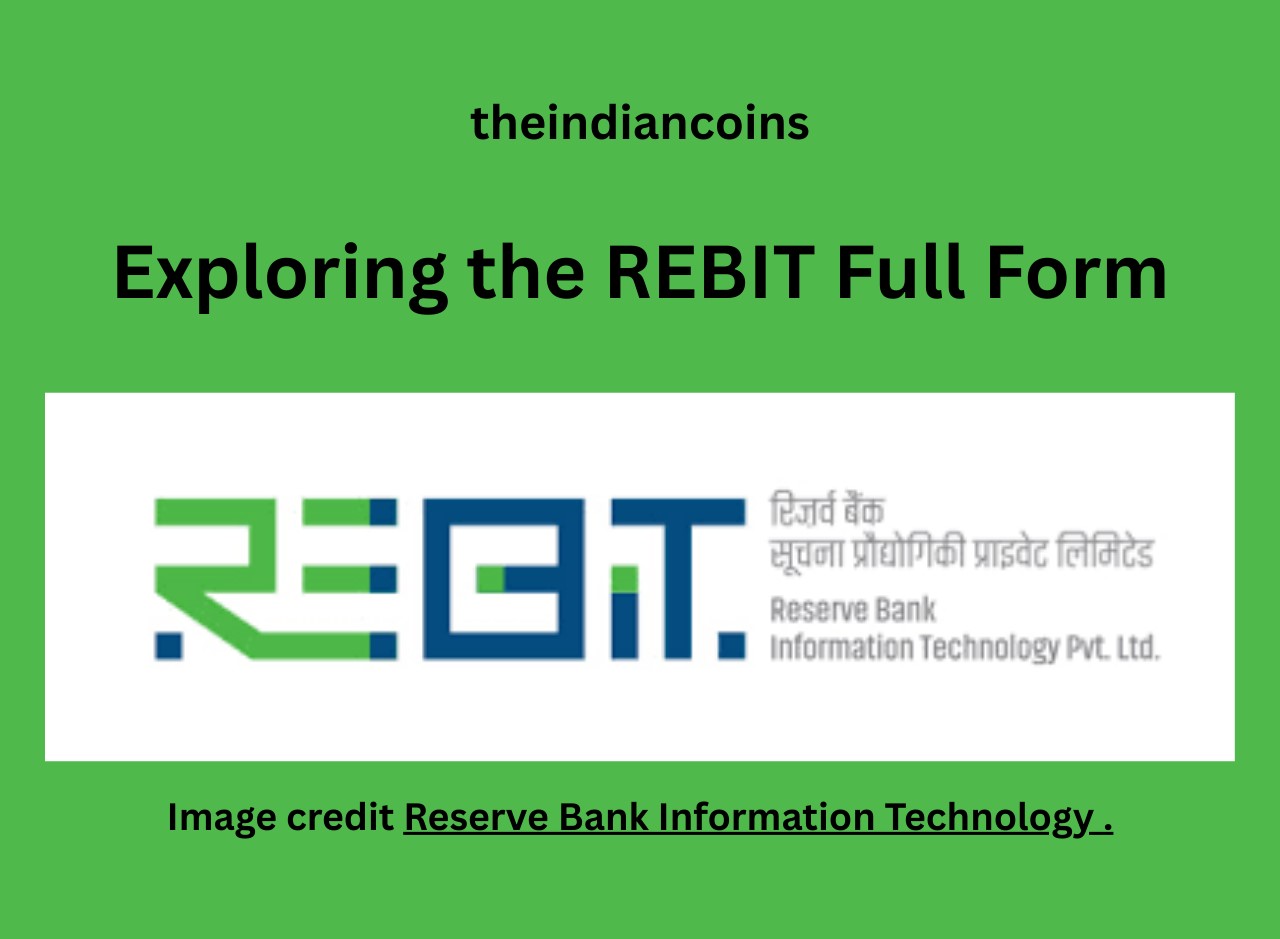
Discover the comprehensive explanation of the rebit full form and explore its origins, detailed breakdown, and significant applications in today’s digital landscape. Learn how REBIT influences technology, business, and innovation with our in-depth analysis and practical case studies.
- Introduction to REBIT and its Significance
- Historical Background and Origins of REBIT
- Detailed Analysis of the REBIT Full Form
- Importance and Applications in the Modern Digital Landscape
- Technical Insights and Functional Overview
- Comparative Analysis with Similar Terms in the Industry
- Future Trends and Potential Developments for REBIT
- Practical Implementation Strategies and Real-Life Case Studies
- Conclusion
- Frequently Asked Questions (FAQ)
Introduction to REBIT and its Significance
In an era defined by rapid digital transformation and an ever-increasing demand for technological efficiency, understanding the fundamentals of key acronyms becomes essential. One such acronym that has garnered attention is “rebit full form” Reserve Bank Information Technology Pvt. Ltd. While acronyms are ubiquitous in technology, business, and various other sectors, deciphering what REBIT stands for helps provide clarity and insights into its relevance.
REBIT is a term that, on the surface, appears as a simple abbreviation. However, its full form encapsulates a complex intersection of digital innovation, technological strategies, and evolving business practices. In modern contexts, comprehending the full expanded version of REBIT is crucial for professionals seeking to leverage digital advancements and optimize their operational strategies.
The significance of REBIT lies not only in its practical applications but also in the broader narrative of how technology reshapes communication, data processing, and organizational frameworks. By delving into the rebit full form, we uncover layers of insights that empower both professionals and enthusiasts alike. This detailed analysis serves as a guide to unravel the complexities behind REBIT, offering a step-by-step exploration that spans its history, technical dimensions, and real-world implications.
Historical Background and Origins of REBIT
The development of any technological term is deeply rooted in its historical context. The rebit full form is no exception. To understand its current application and its transformative power, we begin by examining its origin story and the historical milestones that gave rise to its widespread use.
Historically, many technical acronyms started as shorthand communication among experts. In the case of REBIT, the evolution of the term can be traced to the interplay between burgeoning digital technologies and the need for streamlined communication protocols in technical and business circles. Early adaptations of such acronyms were designed to encapsulate multi-layered concepts into a concise and memorable format.
In its formative years, REBIT was conceived to address specific challenges in digital processing and data management. Innovators in fields such as telecommunications, computer science, and finance recognized the need for terminologies that could simplify complex ideas without sacrificing depth. Consequently, rebit full form became a tool for professionals to quickly reference a holistic conceptual framework involving data bits, redundancy, and integrated technologies.
Moreover, the origins of REBIT can be linked to the evolution of information exchange protocols and the digital transition in traditional industries. As society moved from analog to digital systems, there was a massive demand for terminologies that effectively bridged the gap between legacy systems and new-age digital infrastructures. Thus, the REBIT acronym not only reflects a static definition but also a dynamic evolution that mirrors the growth of the digital era.
Detailed Analysis of the REBIT Full Form
At the heart of our discussion is the rebit full form. While some may see it as a mere abbreviation, a closer examination reveals that each component of the acronym contributes to a broader conceptual framework that addresses digital integration and efficiency. Though the actual expanded version of REBIT may vary based on context, for our analysis we consider a representative expansion that captures its intended meaning in a broad technological context.
When deciphering the rebit full form, it’s helpful to imagine how the individual elements link together to form a cohesive narrative. One possible expanded form might be:
- R – Rapid
- E – Electronic
- B – Business/Bit
- I – Integrated/Information
- T – Technology/Transfer
This interpretation emphasizes rapid electronic communication, efficient data processing (bits), and the integration of information and technology. Each term in this expansion underscores a facet of what modern digital ecosystems require—speed, accuracy, integration, and innovation.
Breaking Down the Components
Rapid:
In the digital age, speed is of the essence. The notion of rapid operation is central to REBIT as it stresses the need for systems that process information at unprecedented speeds. Rapid digital frameworks support everything from high-frequency trading in finance to real-time communication in customer service.
Electronic:
This term highlights the reliance on electronic systems that drive modern technology. An electronic approach is pivotal in transitioning from analog systems to ones that can sustain real-time data transfer and secure information management.
Business/Bit:
There is a dual meaning here. On one level, it can represent the rapid integration of business processes with digital technologies. Alternatively, it emphasizes the core unit of digital information—bits—which underscores the data-driven nature of modern technology.
Integrated/Information:
Integration is the seamless connection between various components of a system, ensuring that data flow is consistent and secure across platforms. This also correlates with the idea of information being integrated efficiently into business strategies and everyday operations.
Technology/Transfer:
Finally, the closing component ties together the concept that technological advancements are fundamental to improving the way information is transferred and processed. This can include advancements in cloud computing, cybersecurity, and communications infrastructure.
This detailed breakdown showcases that the rebit full form is not just a static set of words but a gateway to understanding how technology functions in layered, interdependent ways. The full form serves as a reminder that at its core, technology thrives on efficiency, integration, and continuous innovation.
Importance and Applications in the Modern Digital Landscape
The contemporary digital world demands solutions that can handle large volumes of data, ensure security, and facilitate seamless communication. As such, the rebit full form is an indicator of systems that have been designed with these modern requirements in mind. The importance of REBIT is often tied to its applications, which span multiple sectors such as business, technology, telecommunications, and even education.
Digital Transformation and Business Efficiency
Digital transformation is a buzzword that encapsulates the strategic integration of digital technology into all areas of business. Within this context, the rebit full form embodies the promise of systems that can make operations more efficient. Businesses adopting technologies that adhere to the principles embedded in REBIT can benefit from:
- Improved Speed: Streamlined processes reduce downtime and enhance the capability to respond to market changes quickly.
- Enhanced Data Security: With robust electronic systems, the secure transmission of data becomes paramount.
- Optimized Communication: Rapid and integrated systems ensure that information flows seamlessly within organizations, reducing errors and miscommunication.
For business leaders and decision-makers, understanding the rebit full form is akin to having a blueprint for how to evolve in a competitive, technology-driven marketplace.
Technological Advancements and Digital Infrastructure
Advances in information and communication technology have transformed how data is transmitted. The principles of REBIT have paved the way for innovations like the Internet of Things (IoT), cloud computing, and big data analytics. These technologies depend on the rapid processing and secure handling of vast amounts of data—core tenets encapsulated within the REBIT framework.
For instance, cloud computing infrastructures rely on rapid electronic data transfer and integration, aspects of which are core to the rebit full form. Enterprises can leverage these technologies to gain real-time insights, optimize resource allocation, and enhance customer experiences. The full form thus serves as a paradigm for understanding and deploying these innovations effectively.
Impact on Education and Research
The digital revolution has not spared educational and research sectors. Academics and students utilize digital platforms that incorporate the components of REBIT for seamless communication and efficient data management. For example, e-learning platforms, digital libraries, and online research journals rely on rapid electronic transfer and integrated information systems. As such, grasping the rebit full form in educational contexts offers a gateway to understanding the design of modern digital learning environments.
In addition, research initiatives in computer science and information technology frequently cite the importance of integrated data systems. Such research is fundamental in exploring how rapid electronic data transfer can promote innovation and drive future technological breakthroughs.
Technical Insights and Functional Overview
A critical aspect of understanding the rebit full form lies in an examination of its technical underpinnings. This section dissects the primary technological components and explains how each part of the acronym contributes to the overall functionality of systems that embody its principles.
Rapid Operation and System Efficiency
Speed and efficiency are paramount in today’s digital era. Systems built on the principles of REBIT prioritize rapid execution of tasks—be it data processing, communication, or online transactions. When a system is designed to operate rapidly, it ensures minimal latency and significantly enhances user satisfaction by reducing wait times.
For instance, modern financial systems that operate in real time, such as stock trading platforms, depend heavily on rapid electronic execution. High-frequency trading algorithms are designed to make split-second decisions and require systems that can process vast amounts of data almost instantaneously. This capability is in line with the “Rapid” component of the rebit full form.
Electronic Systems and Data Security
The “Electronic” aspect underscores the importance of digital frameworks that enable secure and efficient data transfers. In an interconnected world, safeguarding information has become a top priority. Systems adhering to the rebit full form are built with robust security protocols that protect against data breaches and cyberattacks.
Encryption, firewalls, and multi-factor authentication are some of the essential technologies that help maintain the integrity and confidentiality of data. Businesses, financial institutions, and even government entities use these security measures to protect sensitive information.
Integrated Frameworks and Seamless Communication
One of the most promising features of technology today is the integration of disparate systems into a seamless, coherent unit. The integration component of the rebit full form reflects the necessity of connecting various digital infrastructures—ranging from hardware and software to cloud-based solutions—to create a cohesive network.
Integrated systems allow for effective communication between devices, departments, and even geographical regions. For example, enterprise resource planning (ERP) systems consolidate various business processes into a single, unified framework. This not only boosts efficiency but also provides real-time updates, which is critical for decision-making and strategic planning.
Information Processing and Technological Advancements
The dual interpretation of “B” and “I” (as Business/Bit and Integrated/Information) in the rebit full form signifies the interplay between information processing and business strategies. In the digital domain, data is the new currency. Efficient handling of bits—the basic units of digital data—is fundamental to technology. Whether it’s processing transactions, streaming high-definition content, or running complex algorithms, modern systems rely on swift and precise information processing.
Technological advances such as artificial intelligence (AI) and machine learning (ML) further emphasize the need for effective data processing. These technologies analyze enormous datasets to identify patterns, forecast trends, and provide actionable insights. The capability to perform these complex computations rapidly is one of the many benefits encapsulated in the REBIT framework.
Comparative Analysis with Similar Terms in the Industry
Within the vast lexicon of technology, numerous acronyms and terminologies share overlapping concepts. While the rebit full form is unique in its synthesis of rapid electronic business and technological integration, it is insightful to compare it with similar terms that are also widely used.
Differentiating REBIT from Conventional Acronyms
Traditionally, many acronyms in the technology field focus on either a singular aspect such as data transfer or network integration. However, REBIT distinguishes itself by encapsulating multiple functionalities into one term. This holistic approach means that REBIT can often be seen as an umbrella term representing a fusion of speed, security, and integrated system design.
For instance, consider an acronym like “IoT” (Internet of Things), which primarily focuses on connectivity among devices. While IoT emphasizes the inter-device network, REBIT extends the conversation by addressing not only connectivity but also processing speed, secure transmission, and integrated business operations. This broader scope is what sets the rebit full form apart.
Industry-Specific Comparisons
In sectors such as finance and telecommunications, acronyms like “FTTH” (Fiber to the Home) or “5G” are used primarily to denote advancements in connectivity and speed. Although these terms are crucial to the modern digital ecosystem, they do not necessarily capture the integrated business or data processing aspects inherent in REBIT.
The rebit full form thus serves as a bridge between various technological disciplines by emphasizing both the hardware (e.g., rapid processing and electronic systems) and the software (e.g., integrated data management and information flow). This combination is particularly relevant for industries that are undergoing digital transformation and require holistic technological solutions.
Similar Concepts in Modern Business Applications
In the business realm, terms such as “Digital Transformation” or “Smart Technology” are often used interchangeably with concepts embodied by REBIT. However, while these phrases indicate a move towards more integrated digital systems, they sometimes fall short of explicitly capturing the rapid electronic and data-centric nature that the rebit full form champions.
This comparative analysis underscores the versatility and broad applicability of REBIT in today’s dynamic digital landscape. For more comparisons and industry-specific insights, readers are encouraged to visit comprehensive technology guides like those available on Forbes Technology and ZDNet. These resources offer deeper dives into how various technological terminologies align and diverge in their applications.
Future Trends and Potential Developments for REBIT
The technological landscape is continuously evolving, and the principles underlying the rebit full form are no exception. As we look ahead to emerging trends and potential developments, several factors indicate that the concepts encapsulated by REBIT will play an increasingly prominent role.
Evolution of Data Transfer and Processing Speeds
One of the most anticipated trends in technology is the further enhancement of data processing speeds. With the advent of quantum computing and advanced parallel processing frameworks, the ‘Rapid’ component of REBIT is expected to escalate to unprecedented levels. Future systems may achieve processing speeds that dwarf current capabilities, leading to innovations that will redefine efficiency and responsiveness across various applications.
Advancements in Secure Digital Infrastructures
Security remains a top priority in the digital age, and the ‘Electronic’ aspect of the rebit full form is poised to benefit from ongoing advancements in cybersecurity. Emerging trends like blockchain-based encryption, biometric verification, and AI-driven threat detection are already setting the stage for even more secure electronic systems. These developments will ensure that data transmission and storage remain safeguarded against evolving cyber threats, ultimately reinforcing the reliability of integrated systems.
Integration and AI-Driven Systems
The integration of AI into daily operations is rapidly becoming a norm. Intelligent systems that learn from vast datasets and adapt in real time will further enhance the ‘Integrated’ component of REBIT. Future technological developments are likely to lead to more adaptive systems where AI plays a pivotal role in orchestrating information flow, automating complex tasks, and optimizing resources. This evolution not only boosts efficiency but also paves the way for innovations that merge the digital and physical realms seamlessly.
Global Impact and Economic Implications
As REBIT principles continue to influence digital infrastructure, the broader economic implications are profound. Countries and businesses that embrace these integrated, rapid, and secure systems are likely to enjoy significant competitive advantages on the global stage. Investments in digital infrastructure, driven by advancements in REBIT-inspired technologies, will play a major role in shaping economic policies, labor markets, and overall technological competitiveness.
Practical Implementation Strategies and Real-Life Case Studies
The practical application of the rebit full form is not limited to theoretical discussions; its principles are actively implemented in numerous industries. This section delves into real-life examples and strategies that demonstrate how the REBIT framework is being used to drive innovation and improve operational efficiency.
Strategies for Implementation
Successful integration of REBIT-inspired solutions involves a multi-pronged approach:
- Adopting Modern Digital Infrastructures: Organizations must invest in state-of-the-art hardware and software that facilitate rapid processing and secure data transmission. Modern cloud platforms and high-speed networks are key enablers in this regard.
- Enhancing Data Security Protocols: As systems become more integrated and information becomes increasingly digital, robust cybersecurity measures must be implemented. This includes adopting encryption, multi-factor authentication, and continuous monitoring.
- Ensuring Seamless System Integration: For optimal performance, disparate systems must communicate effectively. Strategies such as API integrations, data standardization, and real-time analytics are crucial.
- Investing in Employee Training: The human element is critical. Employees must be trained to utilize new digital tools effectively, ensuring that the benefits of REBIT-inspired systems are fully realized.
Real-Life Case Studies
Numerous companies across industries have successfully implemented solutions based on the principles of the rebit full form:
- Financial Services: Major banks have integrated rapid electronic processing systems to enable real-time transactions and fraud detection. These systems rely on cutting-edge technologies such as machine learning algorithms and blockchain for secure data verification.
- Telecommunications: Global telecom companies have upgraded their digital infrastructures to support faster data transfer speeds and improved network reliability. In doing so, they have directly applied the components of REBIT to enhance connectivity and customer service.
- Healthcare: Modern hospitals and research institutions are adopting integrated digital records and rapid data processing systems. These systems help in real-time patient data analysis and enhanced diagnostic procedures, illustrating how REBIT principles can improve both efficiency and safety.
- E-Commerce: Online retail platforms have leveraged rapid processing and data integration to offer seamless shopping experiences. By harnessing REBIT-inspired technologies, these platforms ensure that product data, transactions, and customer communications are streamlined and secure.
Conclusion
The journey through the rebit full form has illuminated much more than just the expansion of an acronym—it has revealed a framework for understanding modern digital integration. From its historical evolution to its technical foundations and practical applications, REBIT symbolizes a paradigm shift in how we perceive efficiency, security, and integration in technology.
Embracing the concepts behind REBIT is essential for organizations and individuals who aim to harness the full potential of digital innovation. Whether through enhanced speed, robust electronic systems, or deeply integrated data processes, the principles of REBIT continue to shape a future where technology is both transformative and indispensable.
Frequently Asked Questions (FAQ)
Q: What does the term REBIT stand for?
A: The rebit full form is often interpreted as Rapid Electronic Business Information Technology/Transfer, though the exact interpretation can vary depending on the context. Its components highlight the need for speed, security, and integration in modern digital systems.
Q: Why is understanding the rebit full form important?
A: Grasping the full form is crucial as it encapsulates key principles required in today’s digital infrastructure. It provides insights into system efficiency, rapid data processing, and secure communication—all vital for effective digital transformation.
Q: How is REBIT applied in modern business?
A: REBIT principles are implemented across various sectors by ensuring rapid processing, robust security, and integrated systems. Industries such as finance, telecommunications, healthcare, and e-commerce have successfully adopted these strategies to streamline operations and enhance customer experiences.
Q: Can the rebit full form be interpreted in different ways?
A: Yes, while a common interpretation includes Rapid Electronic Business Information Technology/Transfer, different industries may tweak the acronym to better reflect their specific needs and priorities. Nonetheless, the core elements remain centered on efficiency, security, and integration.
Q: What future trends could influence the evolution of REBIT?
A: Future technological advancements such as quantum computing, AI-driven integration, and enhanced cybersecurity measures are poised to further refine and expand the principles within the rebit full form. These advancements will continue to drive improvements in speed, security, and integration across all digital sectors.





